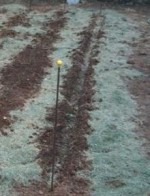 Grass clippings are organic materials that contain a lot of nutrients. Throwing them away or bagging them for disposal really makes little sense. As we become more aware of the fragility of our environment and the importance of taking good care of it putting grass clippings to good use takes on a whole new perspective. There are easy ways to incorporate clippings into the routine of gardening that will not only help your garden but also save space in landfills.
Grass clippings are organic materials that contain a lot of nutrients. Throwing them away or bagging them for disposal really makes little sense. As we become more aware of the fragility of our environment and the importance of taking good care of it putting grass clippings to good use takes on a whole new perspective. There are easy ways to incorporate clippings into the routine of gardening that will not only help your garden but also save space in landfills.
The most obvious use of clippings is to let them go back onto the lawn. No, they do not contribute to the build-up of thatch if you mow properly. Grass clippings contain nitrogen, potassium and phosphorus, the same nutrients you add to your lawn in fertilizer. By letting the clippings fall back onto the grass you can provide up to 25% of the lawn’s need for nutrients, thus reducing the need to apply fertilizer. The clippings contain a large amount of water and so decompose very quickly and add organic matter along with the nutrients. Any pesticides you applied to the lawn is put back into the lawn and will continue to work.
Proper mowing is the key to success. Grasses need to be mowed often enough so that no more than a third of the above ground portion of the grass (about one inch) is removed by each cutting. For cool-season grasses such as fescue and Kentucky bluegrass set the mower at 2½-3½”; for warm season grasses set the mower 1½-2½”. You will probably have to mow more than once a week during periods of rapid growth. If you don’t like the look of clippings on the lawn, consider a mulching-mower that chops the clippings finely, or mowing the lawn twice in opposite directions. Using a mower with a sharp blade will make the job easier.
Yes, there are certain times that you should not leave the clippings on the lawn. If your lawn has extensive disease, is wet when mowed, or has grown excessively long, remove the clippings. Under these conditions it is best to remove the clippings. Long or wet grass tend to form clumps that can shade the grass or create a good environment for the growth of pests and diseases.
If you decide to remove clippings from the lawn there are several things you can do with them so that you use them in an environmentally responsible way. First, consider using the clippings as mulch elsewhere in the garden. A 1” layer of clippings is ideal and reduces moisture loss as well as adds nutrients and organic matter to the soil. More than an inch of grass clippings can reduce water and oxygen uptake and lead to bad odors and heat buildup. For a thicker mulch mix the grass clipping with compost, dry leaves, or wood chips in a ratio of 1:1 or 1:2.
Another good use for clippings is to add them to a compost pile. A large amount of clippings added all at once can cause odor problems so the clippings are best mixed with other garden debris or spread out in a thin layer in the compost area. If compost piles are not for you, spread the clippings in an out of the way place where they can decompose and put organic matter and nutrients back into the soil. If that option is not available, ask a neighbor who likes to garden. Personally, I would take clippings anytime and be grateful for them.
